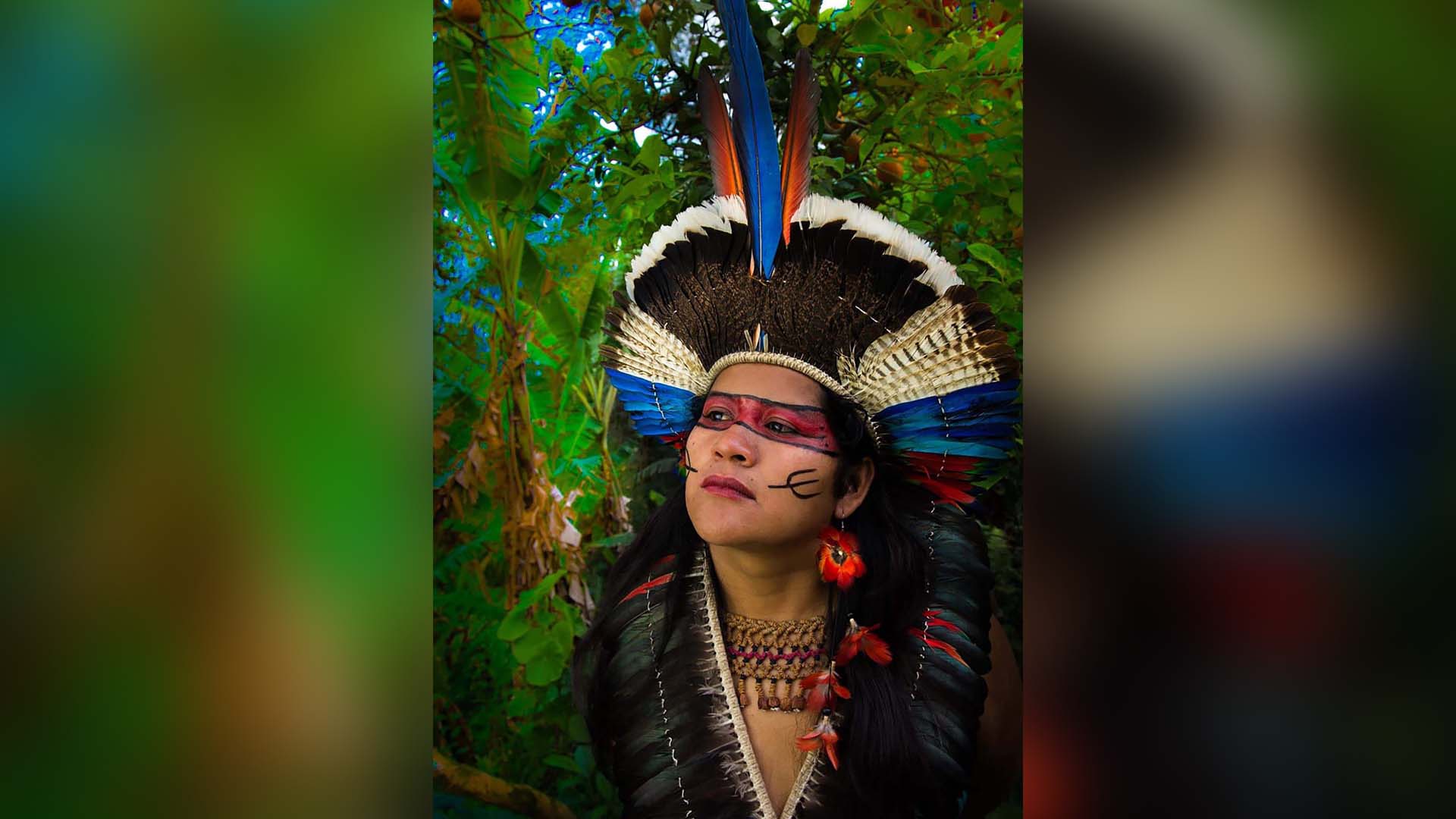Eunice Kerexu is one of the indigenous women leaders of Articulação dos Povos Indígenas do Brasil (APIB), the biggest national indigenous movement in Brazil. She and coordinates the Guarani Yvyrupa Commission and leads the Morro dos Cavalos Indigenous Land in Santa Catarina state.
The Morro dos Cavalos Indigenous Land covers an area of 2,000 hectares, located in the municipality of Palhoça in the State of Santa Catarina, and is in the Atlantic Forest biome, in a coastal area. It is bounded by the Atlantic Ocean to the east, the Massiambu River to the south and Brito River to the north following the southwest. The Indigenous Land is crossed by an interstate highway (BR101) in the north-south extension, which started its construction in 1960 and has recently been duplicated, which brings numerous impacts to the region and to the local indigenous population.
As an indigenous woman leader, Eunice fights for the right to differentiated and intercultural indigenous education and upholds their rights to traditional territory and autonomy. She courageously shares to the public the stories of her people and narrates how her people are affected when invaders arrived and demarcated their lands, and how they have endured abuses and persecution of various forms.
Local indigenous leaders like Eunice who protect their territory are constantly threatened and exposed to innumerable forms of psychological, physical, and labor violence. Eunice, her family, and community were subjected to horrifying attacks. Her house was raided, and some of her documents were stolen. Her mother survived an attempted murder, while the rest of her family is exposed to various threats. Eunice endured local smear campaigns, sponsored by social media and television, that maligned her and disseminated false information on indigenous population and promoted racist and discriminatory acts. Worse, her community was subjected to invasions of indigenous lands and threats to their territories such as arson and indiscriminate firing at indigenous schools and houses.


%2020.49.20.png)
